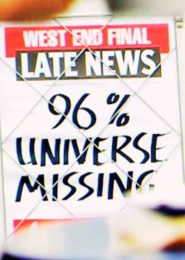Fermat’s Last Theorem (1996)
Fermat’s Last Theorem is a documentary that unravels the centuries-old mathematical mystery.
Presented by physicist Andrew Wiles, this BBC Horizon production takes us on a journey through ambition, obsession, and the triumph of human intellect.
In the 17th century, French mathematician Pierre de Fermat jotted down a tantalizing note in the margin of his book.
He claimed to have a proof for a seemingly simple equation: x^n + y^n = z^n, where (n) is an integer greater than 2.
However, Fermat left no room for the proof, and for over 300 years, this tantalizing puzzle remained unsolved.
Mathematicians worldwide grappled with the challenge. The theorem became a stark reminder of our limitations and the allure of the unknown.
As a ten-year-old schoolboy, Andrew Wiles stumbled upon Fermat’s Theorem. It captivated him, and he vowed to unlock its secrets.
For three decades, Wiles toiled in secret, driven by a singular goal: to prove Fermat’s elusive equation.
The mathematical tapestry he wove was intricate, with threads of algebraic geometry, elliptic curves, and modular forms.
The documentary captures the moment when Wiles, after years of solitude, realized he had cracked the code. His childhood dream was within reach.
The emotion is palpable as Wiles stumbles over his words, overwhelmed by the enormity of his achievement. His journey—marked by setbacks, self-doubt, and determination—is a testament to the human spirit.
Wiles’s proof not only solved Fermat’s Last Theorem but also transformed mathematics. It unveiled connections between seemingly disparate fields.
The story of buried treasure, intellectual duels, and unyielding pursuit resonates beyond math. It’s a cautionary tale and an eloquent reminder that some mysteries are meant to be unraveled.
In conclusion, Fermat’s Last Theorem unfolds a narrative, a journey towards enlightenment. It’s not merely a mathematical tale; it’s a robust testament to the human quest for understanding.




